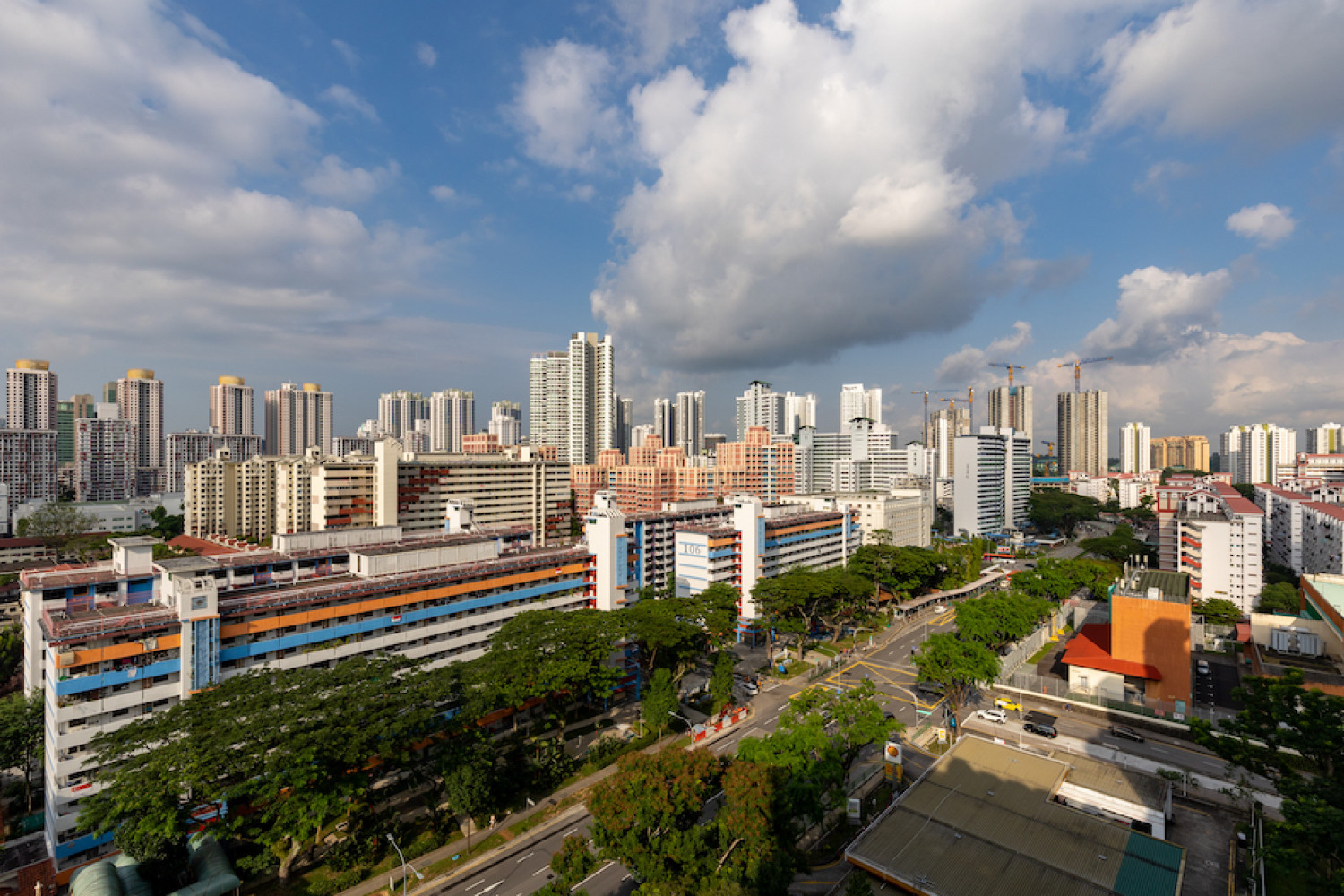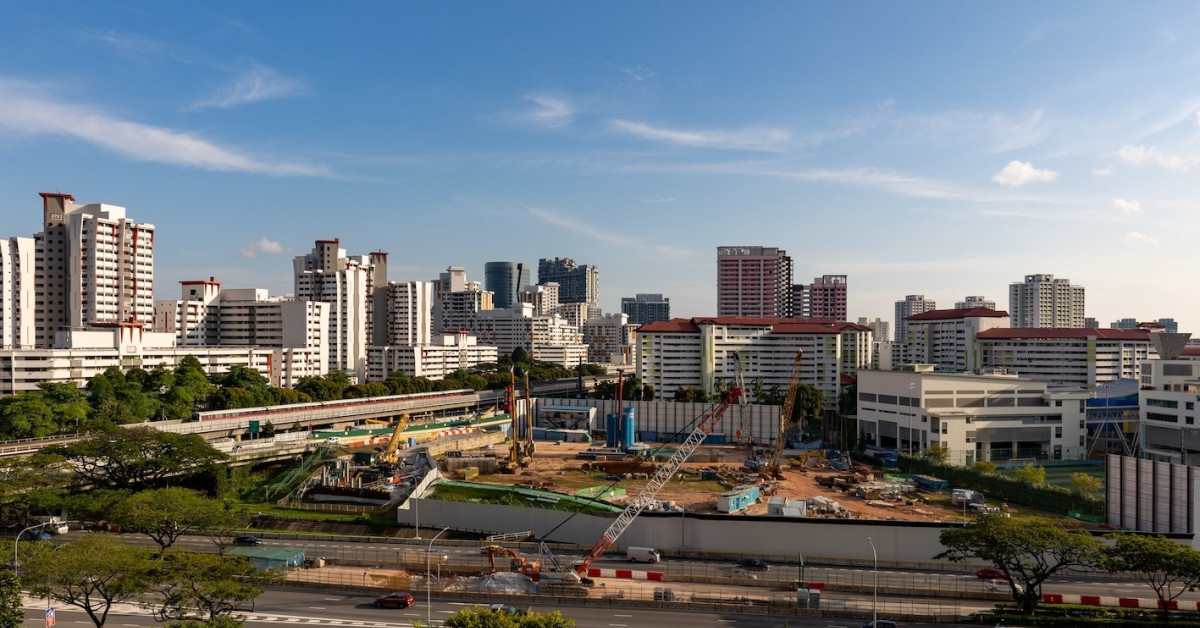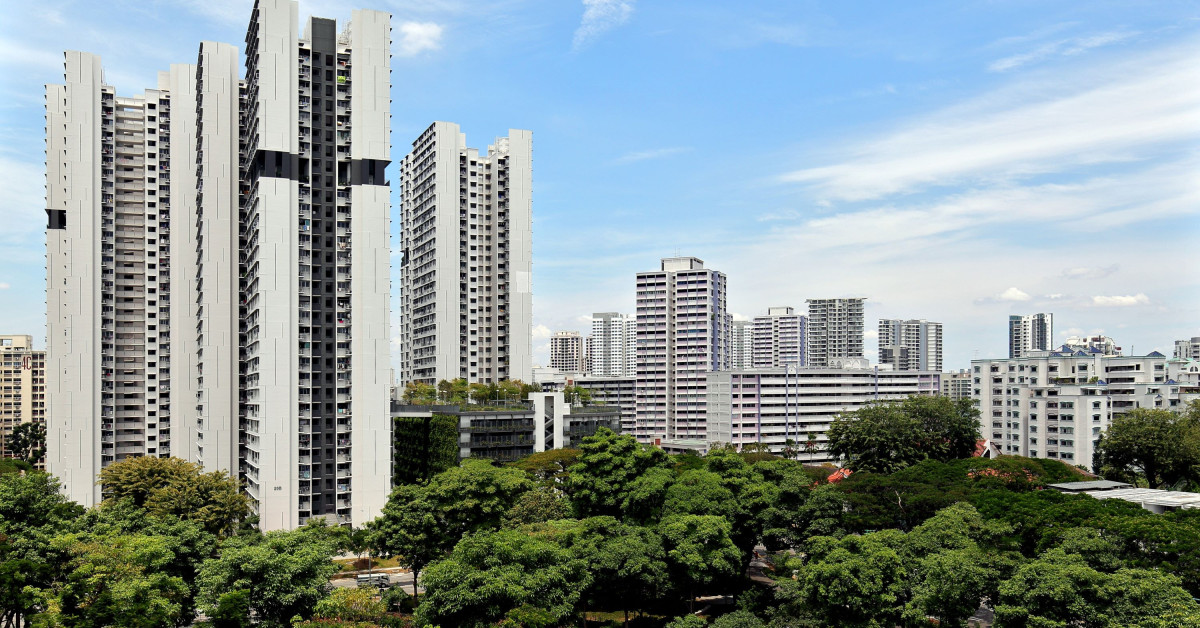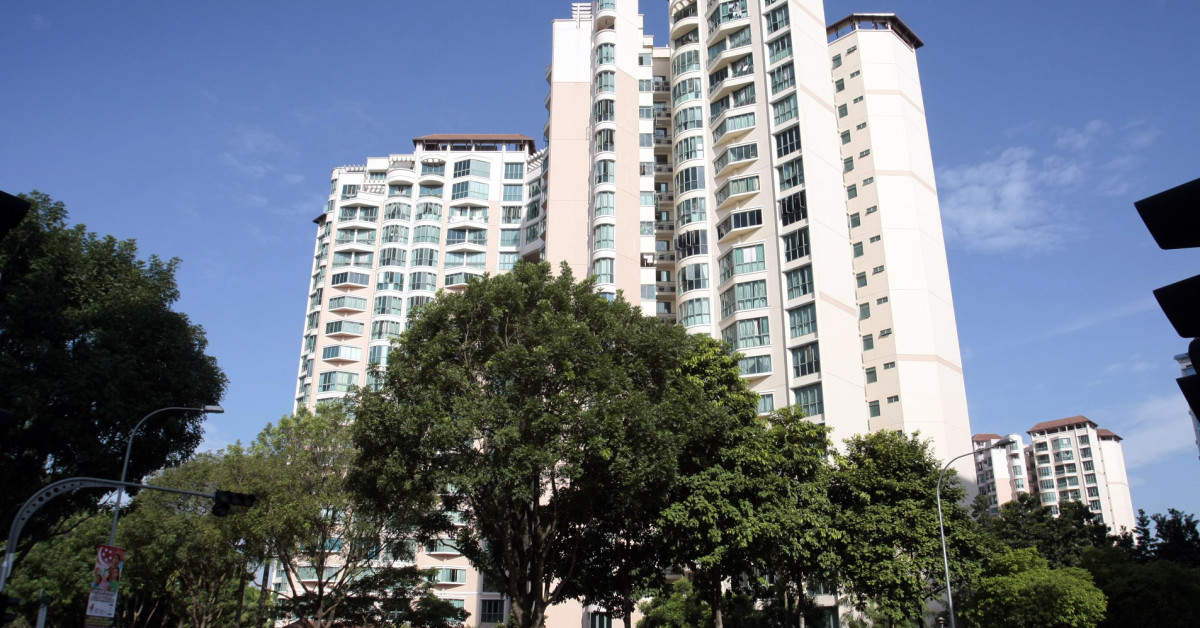New HDB classifications: Will tighter restrictions limit upgrading behaviour and capital upside?
By Cecilia Chow
/ EdgeProp Singapore |

The mature HDB town of Toa Payoh (Photo: Samuel Isaac Chua/EdgeProp Singapore)
Prime Minister Lee Hsien Loong outlined three new public housing classifications of Prime, Plus and Standard in his National Day Rally speech on Aug 20 to address the evolving housing landscape.
The distinction between “mature” and “non-mature” estates, introduced in the early 1990s, has blurred. “In the future, many more BTO developments will be in estates or locations that are effectively ‘mature’,” says PM Lee. “This means that the framework of mature and non-mature estates will no longer work.”
He emphasised that the overarching objectives must be achieved even under the new Standard, Plus and Prime HDB framework: To keep homeownership affordable for all income groups, maintain a good social mix in every town and region, and keep the system fair for everyone. The Prime flats are currently offered under Prime Location Housing (PLH), first rolled out in the November 2021 BTO launch. These are locations in the Central Area, where the most subsidies are given to keep the prices affordable. Plus flats are those in HDB projects outside the Central Area but are in “choicer locations” near MRT stations or amenities.
Advertisement
Advertisement

Once considered a non-mature estate, the median resale price in Punggol (pictured) at $550,000 has surpassed that of mature estates like Bedok ($440,000) and Ang Mo Kio ($425,000) in 2022, says OrangeTee & Tie (Photo: Samuel Isaac Chua/EdgeProp Singapore)
New restrictions
Buyers of Prime and Plus BTO flats will be given additional subsidies to keep such flats affordable, but there will be a clawback of sub- sidies and restrictions on selling. For instance, the minimum occupation period (MOP) for both Plus and Prime flats will be 10 years instead of the five-year MOP for Standard flats.
Prime and Plus flat owners can rent out bedrooms but not the whole flat. “This nips the investment element in the bud,” says Lee Sze Teck, senior director of data analytics at Huttons Asia. Only Singaporeans can buy Plus and Prime flats in the resale market. Private homeowners who want to buy a Plus or Prime resale flat have a 30-month wait-out period. Buyers of the Plus and Prime resale flats must also meet BTO conditions, including the $14,000 monthly household income ceiling.
Singaporean couple Charmayne Aw, 27, and her boyfriend, Damien Ng, 30, said they would still prefer the Standard HDB option. “Even though the Plus and Prime flats come with higher subsidies, selling the flat in the future would be more difficult, and I would have to wait 10 years before I can sell,” says Aw, an interior designer. “The Plus and Prime flats are quite expensive given their locations. My friend got the ballot for a prime location flat. It’s a four-room flat, and the price was $700,000.”
In hindsight, the couple is happy with their choice of a 116 sq m (1,249 sq ft), five-room flat at Tampines Green Jade overlooking Bedok Reservoir, secured in the August 2021 BTO launch for $525,000. It was their first BTO application, too. “We were very lucky,” says Aw. “My cousin and friends who applied too were unsuccessful.” They will be getting the keys to their new flat sometime in 2025.

Artist's impression of the 546-unit Tampines Green Jade, which has a mix of four-room and five-room BTO flats, and is scheduled for completion sometime in 2025 (Picture: HDB)
More HDB housing options
Another 27-year-old, Nicole Lim, would opt for a Plus flat despite the restrictions. “Location is key to me,” she says. “The 10-year MOP doesn’t weigh as much in importance as location.”
HDB dwellers make up 77.9% of Singapore’s residential households, based on the Singapore Department of Statistics in 2022. In comparison, 17% live in apartments and condos, and the remaining 4.9% live in landed properties, ranging from terraced, semi-detached to detached houses. PM Lee has said that most HDB projects will still be Standard projects in the future. Besides the five-year MOP, there are no restrictions in the resale market.
Advertisement
Advertisement
“The intent is to have more options to suit a wide spectrum of demographics,” says Lam Chern Woon, Edmund Tie’s head of research and consulting. “Previously, prime flats were accessible only to high-income earners in the resale market or to lucky ‘lottery winners’ in the BTO market.”

As there will be no restrictions on Standard resale flat buyers’ household income, some high-income households earning above $14,000 a month may opt for resale Standard flats (Photo: Samuel Isaac Chua/EdgeProp Singapore)
Pricing anomalies in the future?
As there will be no restrictions on Standard resale flat buyers’ household income, some high-income households earning above $14,000 a month may opt for resale Standard flats, notes Lam. He adds that there is an existing pool of 1.1 million Standard flats, some located in Central locations or possessing other attractive locational attributes.
“We might witness some pricing anomalies in the future where resale Standard flats could trade at higher prices than resale Plus or Prime flats,” says Lam. “But it may be a case of crossing the bridge when we get there.”
In the short- to medium-term, there could be a surge in demand for existing resale flats and an increase in HDB resale flat prices driven by those who do not want to buy flats with a long MOP, reckons Christine Sun, OrangeTee & Tie senior vice-president of research and analytics. “Now, more grants are also given to first-timers buying resale flats. Therefore, prices may rise when some demand is diverted to the resale market.”
The longer MOP of 10 years for future Plus and Prime flats will mean it will take longer for Singaporeans to be able to upgrade to private property. “After factoring in a 10-year MOP and a three to five-year construction period, the middle class could be trapped in their Plus and Prime flats,” says Eugene Huang, founder and director of Redbrick Mortgage Advisory.
Existing flats in centrally located projects such as Pinnacle @ Duxton in Tanjong Pagar, Skyville @ Dawson, and Skyterrace @Dawson, which are unencumbered by similar restrictions that new Prime flats have, may look very attractive by comparison. Hence, the prices of these flats could be driven even higher. “The likes of Pinnacle @ Duxton will be legendary,” says Huang.
Advertisement
Advertisement

Pinnacle @ Duxton on Cantonment Road in the City Centre is “legendary” for its million-dollar HDB resale flats, with the latest at $1.4 million (Photo: Samuel Isaac Chua/EdgeProp Singapore)
Curbing million-dollar flat transactions
“The new restrictions for Plus and Prime flats could slow wealth accumulation,” Huang adds. “New homebuyers will be discouraged from using their BTO flats as a stepping-stone to accumulate wealth and upgrade to private property.”
However, OrangeTee’s Sun believes extending the MOP of Plus and Prime flats is a good move. “The change will reinforce the message that public housing is primarily meant to serve as a home for the long term and not to be used for speculative investments or treated as short-term assets,” she says.
HDB transaction data from data.gov.sg showed a growing number of young Singaporeans selling their flats shortly after the requisite five-year MOP. The number of flats sold within two years of MOP or aged seven years and below ballooned 733% to 6,189 units in 2022, from 743 units in 2014, OrangeTee says.

Source: OrangeTee & Tie Research and Analytics
Such flats constitute 23.2% of total HDB resale transactions, up from 4.6% in 2014, observes OrangeTee. “This trend is more prevalent in non-mature estates, where transactions of flats aged seven years and below jumped from 5.2% in 2014 to 31.3% in 2022,” adds Sun.
The number of flats that had just obtained MOP and were sold for at least $1 million has also risen. In 2022, flats of seven years and below comprised 63 transactions of at least $1 million, constituting 17.1% of overall million-dollar transactions of such flats during the year.
Comparatively, no flats of that age range were sold for at least a million dollars in 2014, notes Sun. “A rising number of such transactions may distort the price expectation of other sellers and fuel the heated million-dollar flat market.”
Sun adds that extending the MOP period for Plus flats outside of the Central Area will slow down such transactions. “When ageing mature estates are redeveloped into new housing projects, it is a good reminder to young Singaporeans to stay longer in these well-located, subsidised flats.”

Source: OrangeTee & Tie Research and Analytics
Preventing people from being priced out
The new restrictions to Plus and Prime resale flats will undoubtedly curb the number of million-dollar flats, Sun acknowledges. “With future HDB resale buyers of Plus and Prime flats subjected to restrictions including income ceilings, it will affect their affordability and ability to pay high prices for future resale flats,” she says.
“If restrictions to household income are not put in place, prices of the Plus and Prime flats will soar above $1 million in the resale market, and after 10 years, only the rich will be able to afford these resale flats,” says PropNex CEO Ismail Gafoor.
Restricting the monthly household income to $14,000 gives others from different social backgrounds the opportunity to live in a Plus estate, adds Gafoor. “This will create social cohesion. We do not want a class-conscious Singapore 10 years from now. That is the major objective of these restrictions.”
Limiting the income ceiling also limits price appreciation, Gafoor says. However, he adds that whether it will curb people’s ability to upgrade to private property will depend on future prices. Assuming someone purchases a Plus flat for $500,000 to $600,000, and 10 years later, it is sold for $700,000 to $800,000. “The seller will still be able to make some profit,” he adds. “But huge capital appreciation could be capped.”

Source: Huttons Data Analytics, URA Realis downloaded as at Aug 22, 2023
Resale HDB prices have risen 34% since 2019, note UBS analysts Terence Lee and Michael Lim in their report on Aug 17. “Upgrading behaviour by HDB homeowners had inadvertently fuelled private residential price increases of 26%,” says the report. “With more ‘upgrader’ options and grant access, the demand-supply imbalances for upgraders could be alleviated.”
According to Huttons Asia, homebuyers of non-landed private residential properties in the Outside Central Region (OCR) with HDB addresses made up 49% of buyers in 2017, compared to 41% with private addresses. In 1H2023, those with HDB addresses made up just 38.3% of the buyers of non-landed private residential properties in the OCR, while those with private addresses accounted for 58.3%, based on caveats lodged as of Aug 22.
“Some of the HDB upgraders could have been priced out by boomers who have upgraded to private property and are helping their adult children purchase their first home,” says Huttons’ Lee.

SkyTerrace @ Dawson, where multiple five-room flats have crossed the $1 million threshold, including one at $1.418 million (Photo: Albert Chua/EdgeProp Singapore)
MOP trade-offs
Could a 10-year Minimum Occupation Period (MOP) for Plus and Prime flats redirect some of the demand towards the executive condo (EC) market? ECs — a hybrid of public-private properties — offer HDB grants to first-time buyers with conditions and a higher $16,000 monthly income ceiling.
First-time EC homebuyers have a five-year MOP, after which they can only sell to Singaporeans and permanent residents (PRs). After the 10th year, the ECs could be sold to locals and foreigners without restrictions, like other 99-year leasehold condos in the OCR.
Still, EC buyers will not be eligible for HDB loans but must apply for loans from private financial institutions, and the loan-to-value (LTV) limit is capped at 75%. “EC buyers must have sufficient cash to pay the [25%] down payment,” says OrangeTee’s Sun. “ECs also offer different product offerings such as shared condo facilities and gated security access.”
There are trade-offs: ECs have fewer restrictions but are usually situated in less desirable locations than Plus and Prime flats, Sun points out. “If ECs were in better locations, their MOP would probably be longer, such as 10 years MOP before they can sell to Singaporeans and PRs, and 15 years before they can sell to foreigners,” she says. “And there could be more stringent selling criteria.”
Check out the latest listings for HDB properties
https://www.edgeprop.sg/property-news/new-hdb-classifications-will-tighter-restrictions-limit-upgrading-behaviour-and-capital-upside
Tags: |


Follow Us
Follow our channels to receive property news updates 24/7 round the clock.
Subscribe to our newsletter
Advertisement
Advertisement
Advertisement
Search Articles


